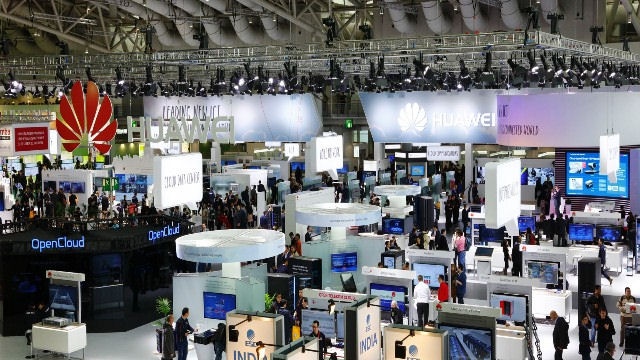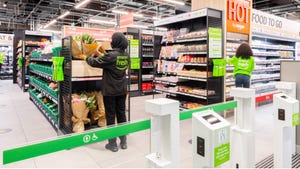German tech show CeBIT has been hijacked by the nascent IoT industry as Huawei, ZTE, and SAP all used the event to make announcements.
March 16, 2016

German tech show CeBIT has been hijacked by the nascent IoT industry as Huawei, ZTE, and SAP all used the event to make announcements.
Huawei launched a connected city lighting solution that claims to reduce municipal lighting energy bills by 80% though ‘multi-level intelligent control’. Essentially this seems to mean every street light is connected to a central console via 6LoWPAN technology, from where it can easily be switch on and off, or even dimmed, according to sensors that record how much activity is happening near the light and what the weather’s like.
“Lighting IoT lays a solid foundation for the integration of a variety of sensors, to facilitate functions such as environmental and transportation monitoring, and installation of smart charging facilities and intelligent rubbish bins, providing Smart City development with valuable big data and integrated interaction to improve citizens’ lives,” said Wu Chou, CTO of Huawei’s Switch and Enterprise Communications division.
Not to be out done rival vendor ZTE announced three IoT initiatives at the show. The BluePillar Smart Streetlamp incorporates a 4G base station transceiver, IoT sensor bundle and a charging point for electric vehicles. Three new smart meters were also launched that support a range of low power wireless standards including Zigbee and LoRa, the latter of which is considered to be especially good for the ‘last mile’ data transmission. Lastly an mHealth physical examination terminal is designed to monitor the body via wearable IoT devices and help manage chronic conditions.
“The BluePillar lighting solution brings a new operation-model,” said Yanmin Bo, Vice CEO of ZTE. “It forms many links in the industrial chain including government, committee sites, councils, operators, equipment firms and service providers, resulting in smarter collaboration and increased productivity. It provides an opportunity for operators to expand into new markets.”
German enterprise software giant SAP looked to strengthen its IoT credentials via a partnership with Vodafone to produce the ‘IoT foundation bundle for SAP HANA. The collaboration aims to allow enterprises to connect and manage devices using Vodafone’s IoT connectivity platform and to collect and move data from the devices into the SAP HANA platform.
“SAP is building a strong ecosystem of key partners in the IoT space,” said Nayaki Nayyar, head of IoT GTM, SAP. “Working with companies like Vodafone, we are able to provide a seamless and feature-rich way for our customers to get the most out of their IoT data — from insight to outcome.”
Elsewhere SK Telecoms made its big IoT strategy announcement, which involves investing KRW 100 billion over the next two years to roll-out a low-power WAN across South Korea using the 900MHz band. Alongside this SKT is establishing an ‘IoT Control Center’ to manage the network and devices, and upgrade its ThingPlug IoT platform.
About the Author(s)
You May Also Like








.png?width=300&auto=webp&quality=80&disable=upscale)


_1.jpg?width=300&auto=webp&quality=80&disable=upscale)


.png?width=800&auto=webp&quality=80&disable=upscale)